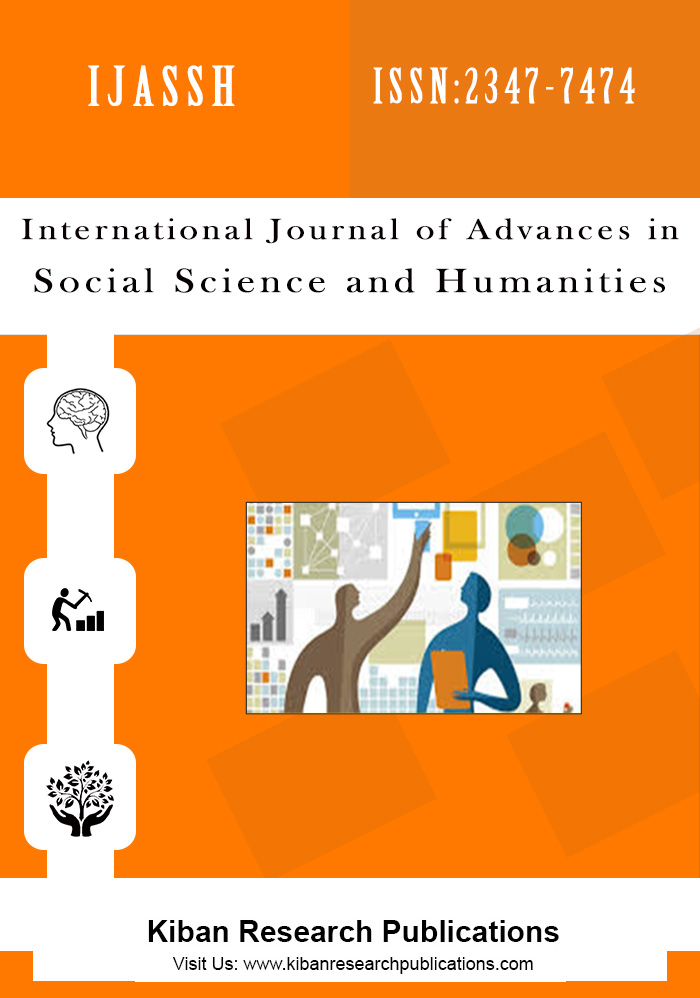Roma Gypsies Today: The Rise of Roma Activism in Spain
Abstract
After the decades of state-funded service provisions through the non-governmental organizations in Spain, the development of the Roma Gypsies has remained static. In the name of intercultural and vocational training programmes, the ‘Spanish Model’ for Roma Inclusion has become a myth for the socio-economic development. The Roma organizations stand against discrimination and social exclusion which are faced by Roma people. In the context, the social inclusion of Spanish has been accompanied the intercultural education by government agencies in providing formal vocational training under Acceder and Workaló programmes since the 2000. The purpose of the article was to understand critical discourses of social inclusion by Spanish government for Roma gypsies and also understand the proactive role of Roma advocacy groups. Using the purposive sampling method, 52 Roma individuals engaged in informal and recycling sector were studied from Bilbao City of Basque region of Spain. The case studies of the Roma NGOs viz. Kale-Dor-Kayiko Association and Fundación Secretariado Gitano were drawn to understand the standpoints of Romani activists in the inclusion process for Roma. In conclusion, the study argued the discourse of social inclusion seeks to debunk the idea that the poverty is due to cultural inadequacies of the poor and underlines economic, political, and cultural barriers, and discrimination faced by Roma in their routine labour activities. The review of ‘Spanish Model’ for inclusion of Roma by Roma advocacy organizations has urged the local governments to revamp existing social security schemes; the social minimum; and unemployment guarantee payment and full citizenship status.
Keywords: Exclusion, Minority, Labour Market, Spanish Model, Social inclusion, Civil society organization.
References
Beall Jo, Piron LH (2005) DFID social exclusion review. London School of Economics and Political Science, Paper Review, pages. 71.
Sen A (2000) Social exclusion: Concept, application and Scrutiny. Social Development Paper, No.1, June, Asian Development Bank.
Kabeer Naila (2000) Social Exclusion, Poverty, and Discrimination: Towards an Analytical Framework. IDS Bulletin, 31(4).
Cachon-RodrÃguez L (2009) La ‘España Inmigrante: Macro discriminatorio, mercado de trabajo y polÃticas de integración. (Spanish), Anthropos Editorial, Barcelona.
Lopez-Escribano C, Beltran J (2009) Early predictors of reading in three groups of native spanish speakers: Spaniards, gypsies, and americans. The Spanish Journal of Psychology, 12(1):84-95.
Salinas J (2007) ‘Reflections on educational policies for Spanish gypsies’, European Education, 39(1):32-49.
Pinnock K (2002) The impact of the NGO sector and roma/gypsy organizations on bulgarian social policy-making 1989-1997, Journal of Sociology and Politics, 31(2):229-250.
Donald-Kerwin M (2009) The role of government-NGO partnerships in immigrant integration: A response to Howard Duncan from the perspective of US civil society’, Studies in Ethnicity and Nationalism, 9(2):315.
Aptekar S (2009) Organizational life and political incorporation of two asian immigrant groups: A case study, Ethnic and Racial Studies, 32(9):1511-1533.
Dzhengozova M (2005) Social dynamic of group identities: Living together in the neighbourhood, Research Paper, University of Deusto, Bilbao.
Open Society Institute. (2002) The situation of roma in spain. Minoriting the EU Accession Process, Minority Protection, EUMAP Organization, 15.
Ruiz, M, (2016). Discrimination and roma community (Special issue on anti-gypsyism: Opinions, pieces, analysis and bibliography). Madrid: Fundación Secretariado Gitano (FSG), SG Annual Report, 88-91.
Ovalle OM, Mirga A (2014) The myth of the spanish model of roma inclusion. Voices, Open Society Foundation.
Fundación Secretariado Gitano (2007) Employment and vocational training. FSG-Annual Report.
Salinas J (2007) The roma people in spain. ……..
Asociación Vasca Para la Investigación y Promoción Del Pueblo Gitano (2005) Plan vasco para la promoción integral y participación social del pueblo gitanos, Abril, Departamento de Vivienda y Asuntos Sociales, Administración de la Comunidad Autónoma del PaÃs.
Etxeberria F (2002) Education and roma children in the basque region of spain, Intercultural Education, 13(3):291-304.
Foundation BBV (1999) Renta nacional de espatia y su distribución provincial, Fundación BBV, Bilbao, 29.
Grant DK. Uswick C (2001) Organizational discourse: Key contributors and challenges, International Studies of Management and Organization, 31(3):8.
Shashi, SS (1990) Roma: The gypsy world, Sandeep Prakashan, Delhi.
Spanish National Institute of Statistics. (2000) Municipal register-2001-2008. Tomas-Agullo, E and others, (eds) (2004) Erradicación del chabolismo e integración social de los gitanos en Avilés: Investigación, evaluación y propuestas, Servicio de Publicación de la Universidad de Oviedo, Ediuno, 342.
Mikolaj-Stanek (2009) Pattern of romanian and bulgarian migration to spain. Europe-Asia Studies, 61(9).
Government of Spain (2008) National action plan on social inclusion of the kingdom of spain (2008-2010).´ Annex IV- Goods Practices in Social Inclusion.




